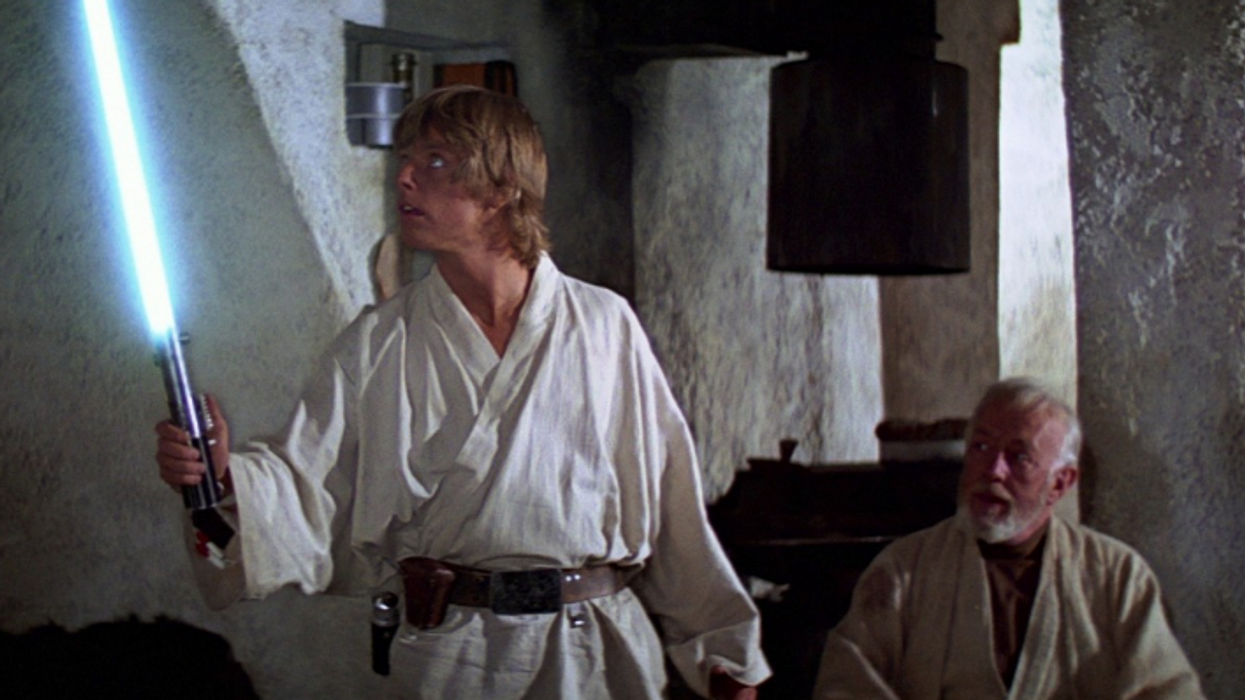What is a Lightsaber Made Of? The Original Lightsaber Prop Story
The creative ingenuity behind one of the most iconic props in movie history.

The most innovative solutions often come from limitations. There is never enough time and never enough money for any production in all of production history, this can be a hindrance, or it can be a creative opportunity. The story behind the scratch-build of one of cinema's most iconic props is an inspiration that wherever you are and whatever surrounds you could be the source of your next great idea.
What is a lightsaber made of?
We're not talking about the crystals and the whole mythology behind lightsabers and what they are made of. Or even what an actual lightsaber type device or tool might be.
We're talking about the original lightsaber hilt prop designed and built for George Lucas' Star Wars in 1977. The answer isn't glamorous or expected. And in many fan and maker circles, it's quite well known.
See anything familiar in this photo?

Yep. Lightsaber props started with Graflex flashguns. If you're wondering what those are like in action, just picture an old movie scene where someone takes a picture and the big flash goes off. That's what the flash gun on the side of the camera is doing.
That strange old device became a lightsaber.
This episode from DigitalRev In-Focus from over a year ago gives more details on how the flash bulb on a Graflex camera would take its place in galactic history
Original Lightsaber Prop Construction
The original lightsaber props were actually a bit more than just flashguns. The art department selected other items and used them to help build out the look of the prop, from the grips that were made from sliding glass cabinet windows, to old style calculator bubble strips.
Obi-Wan Kenobi's lightsaber, which gets significantly less screentime than Luke's or Darth Vader's, has a much more complicated story.
Kenobi's lightsaber didn't have the flashgun base. Instead, it was cobbled together using a variety of odd objects. Ingredients included are part of a sink knob, a browning machine gun booster, a WWI British rifle grenade, and a Rolls-Royce jet engine balance pipe.
The sum result? A more elegant weapon for a more civilized age.
But the story behind the original lightsaber construction isn't just another piece of movie trivia floating through the universe. It's a powerful tale of creative discovery. Pressed with budgetary constraints, and deadlines, the art department for the famed sci-fi epic was constantly up against it. They had to think fast and get creative.
The end result was a well-worn "lived in" feel to a galaxy that was built using found elements. The Death Star itself is a famous example of a method called "kit-bashing". Famous "maker" Adam Savage demonstrates the of kitbashing in this video about one day builds.
When faced with roadblocks and limits, the creative team behind Star Wars built things that stretched the boundaries of our collective imagination.
The power of a creative art department is potent. When you are figuring out how to realize your next vision, start by looking around you. The next Graflex flashgun could be right under your nose.











